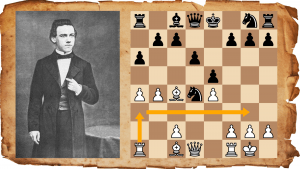Review: A Random Selection of Recent Chess Publications
I sometimes wonder if the lengthy, in-depth type of book review has any kind of future. Wouldn't it be better to just get it over with, hear the reviewer's superficial opinion, yadda yadda yadda, and move on? What's the point elaborating on arguments if they can also be summarized in a couple of nice one-liners?
I think it's an inevitable truth about book reviewing that the reviewer's opinion is usually formed already after reading just a couple of paragraphs, after browsing lazily through the book and feeling it in your hands for some time. Sometimes it's not even easy to explain the reason behind a certain evaluation: in such cases there's just a general feeling, an intuition, founded on dozens of years reading and evaluating books.
There's nothing bad about this: Malcolm Gladwell called it the 'blink' effect in his best-seller Blink (2005). The late Dutch writer and reviewer Gerrit Komrij went even a few steps further; he once declared that the overal evaluation of a book he reviewed was sometimes the result of a simple flip of the coin. I solemnly promise never to flip any coins to determine a work's quality, but in this review I do want to have a briefer look at some chess publications that have appeared recently.
An obvious starting point is the Carlsen-Anand World Championship match, which has already triggered a number of publications. Two are worth noting: a book and a lengthy magazine article.
 The first is Carlsen's Assault at the Throne by Vassilios Kotronias and Sotiris Logothetis, published by Quality Chess. This book not only covers the World Championship match in Chennai, India, last november, but also the Candidates’ Tournament held in London in March 2013, which was won by Magnus Carlsen with the narrowest of margins.
The first is Carlsen's Assault at the Throne by Vassilios Kotronias and Sotiris Logothetis, published by Quality Chess. This book not only covers the World Championship match in Chennai, India, last november, but also the Candidates’ Tournament held in London in March 2013, which was won by Magnus Carlsen with the narrowest of margins.
In my opinion it is a very good book considering the fact that it is, in the words of the publisher, "an instant book on the World Championship." (It was published in early December 2013, i.e. just a few days after Carlsen won the title.) It is also refreshing to see color pictures in a chess book, and the 'diary style' works fairly well, too. The tension and atmosphere of the events are well described (and I should know as I've visited both events.)
The book's game analysis are thorough, but sometimes just a tadd dry, not to say boring. This becomes especially clear when you compare the book's annotations of the Chennai match with the notes by Anish Giri in New in Chess Magazine 2013/8 (which, by the way, can be downloaded for free in New in Chess' wonderful new chess-viewer app).
 One example is the 4th match game. Kotronias and Logothetis touch on most of the game's critical moments, but their writing style isn't very interesting in my opinion. Whilst Giri's comments are very intuitive and 'chatty', Kotronias and Logothetis like to 'stick to the facts'. Compare both wtitten comments to White's 28th move.
One example is the 4th match game. Kotronias and Logothetis touch on most of the game's critical moments, but their writing style isn't very interesting in my opinion. Whilst Giri's comments are very intuitive and 'chatty', Kotronias and Logothetis like to 'stick to the facts'. Compare both wtitten comments to White's 28th move.
Giri:
"28.hxg4? This reminds me of the famous story how Kasparov lost a bishop vs knight endgame because during the adjournment analysis with his team they automatically went for gxh4 gxh4. Anand, however, unlike Karpov, failed to exploit his opponent's inaccuracy. He could have done so with 28.Rc2! (...)"
Kotronias & Logothetis:
"28.hxg4?! It would seem tempting to call this an automatic recapture, but a glance at the clock times indicates that Vishy invested close to two minutes on this decision. 28.Rc1! (...)"
Which comment do you like better? Leaving aside the different alternatives (Rc1 vs Rc2), the comment from the authors of Carlsen's Assault on the Throne is more factual, more revelant to the match situation - but to me, Giri's comment is more appealing and interesting. It not only hints at another important moment in world chess championship history (in general Giri refers more to the 'outside world', often quoting comments from other strong players, whereas Kotroian and Logothetis' approach seems more 'hermetic'). It also reveals a glimpse of how the associative mind of a super grandmaster works.
This is a perspective that is somewhat absent in Kotronias and Logothetis' book. As said, my overall evalulation of the book is still positive, but if you're looking high quality free-format chess analysis, you better get yourself a copy of the New in Chess magazine as well.
 I've been meaning to write something for a long time about Aron Nimzowitsch 1928-1935: Annotated Games & Essays, edited by Rudolf Reinhardt and published by New in Chess. This book has been praised by several reviewers. A collection of Nimzowitsch' post-Chess Praxis (1928) games and analysis as well as essays, it's surely an important book from a historical perspective, but I must admit that in the end, I didn't find the book very interesting.
I've been meaning to write something for a long time about Aron Nimzowitsch 1928-1935: Annotated Games & Essays, edited by Rudolf Reinhardt and published by New in Chess. This book has been praised by several reviewers. A collection of Nimzowitsch' post-Chess Praxis (1928) games and analysis as well as essays, it's surely an important book from a historical perspective, but I must admit that in the end, I didn't find the book very interesting.
For starters, giving games without any kind of comments or analysis, even if they haven't been published before, just isn't acceptable anymore in my view. Furthermore, even historical analysis by Nimzowitsch or other strong players could have been checked with an engine, for instance in a footnote.
I also found the format of the book confusing. The first part chronologically follows all the great tournaments in which Nimzowitsch participated between 1928 and 1934, with analysis by himself and others. Then, some additional chapters such as 'Nimzowitsch as a Simultaneous Player' and 'Various articles by Nimzowitsch' follow.
I'm not convinced by this way of presenting the available material which makes a somewhat chaotic impression on me. Why not present all material in chronological order? Or order the book according to who analyzed the games - all analysis by Nimzowitsch himself neatly collected in a single chapter, for example. The current arrangement certainly isn't in the spirit of the transpararant and logical structure of both My System and Chess Praxis and to call the book "the unauthorized sequel" to these books (as can be read from the cover) seems almost blasphemy to me.
In summary, I'm sure this book is a treasure trove for chess historians and chess players with a serious interest in Nimzowitsch - anyone else might well end up more confused than informed after reading it.
 Let me also briefly mention an updated version of Andrew Soltis' classic Pawn Structure Chess, originally published in 1975 and now made available again by Batsford Chess. I grew up with this book, learning about pawn structures in various openings in Soltis' straightforward and clear style of explaining.
Let me also briefly mention an updated version of Andrew Soltis' classic Pawn Structure Chess, originally published in 1975 and now made available again by Batsford Chess. I grew up with this book, learning about pawn structures in various openings in Soltis' straightforward and clear style of explaining.
"Black's best chances in the Scheveningen formation come from threats to the e4-pawn. The most common method is ...b5-b4, driving away the best defender of the e-pawn, a White knight on c3. The popularity of the Najdorf Variation stems, to a considerable degree, from that simple plan. White's methods of safeguarding e4 include a2-a4, b2-b4 and the simple f2-f3. But there is a big downside to f2-f3. Unless it is followed by g2-g4-g5, it surrenders White's best middlegame options and makes ...d5! stronger."
After such an explanation, you don't need many examples, and indeed Soltis only gives four before moving on to the next theme. This style of chess writing isn't very popular anymore these days, but it's hard to understand why - I still find it exemplary.
Perhaps modern readers prefer more elaborate sentences, a few jokes and some insights in the writer's personal life, with many detailed examples which refer to the most recent grandmaster games, rather than just a couple from the 60s and 70s, to drive the point home. Sometimes though, less really is more.
Pawn Structure Chess, though enriched with more recent games and fragments, essentially remains the same which means it's still a very instructive book for anyone who wants to learn chess properly. If you don't have this book already, you should buy it before it's out of print again.
 Finally, I want to make you aware of a very nice ChessBase DVD by my Dutch friend IM Robert Ris: A Black Repertoire against the Two Knights. This is not the first FritzTrainer DVD that Ris has published, but in my opinion it's his best so far.
Finally, I want to make you aware of a very nice ChessBase DVD by my Dutch friend IM Robert Ris: A Black Repertoire against the Two Knights. This is not the first FritzTrainer DVD that Ris has published, but in my opinion it's his best so far.
On this one, Ris takes a look at the Traxler Variation (1.e4 e5 2.Nf3 Nc6 3.Bc4 Nf6 4.Ng5 Bc5!?) which is an opening I've been studying (and sometimes playing) myself since the late 80s. I must say I was rather skeptical at first, especially because I couldn't imagine Ris having ploughed through all these ancient books and articles that have been written for over 100 years about this fascinating variation.
But my skepticism proved unfounded when I noticed how Ris consistently emphasizes and recommends exactly the right moves and lines in his treatment. Even without all those countless publications (incuding a few of my own!), his common-sense approach towards the opening, assisted by a few very strong chess engines of course, is refreshing and inspiring even to someone who has looked at the opening from all possible angles. The only downside to his approach is that this historic perspective is not only missing in the analysis, but also as a supporting narrative for the DVD as a whole.
Ris' story of the Traxler Variation is a story told by showing concrete (computer) lines instead of (human) ideas which have grown over time. This is not a bad thing, of course, and I can recommend this DVD to anyone interested in these wild complications, whether they know its rich history or not.
Still, as someone who has been not only interested in 'the truth' of Black's bold rook sacrifice but also in its historic roots, I sometimes felt like someone being told the exact number of victims in the 1937 Guernica bombing, instead of being shown Picasso's masterpiece. (Unfortunately, it's almost impossible to enjoy it in silence.) Chess is, after all, not only science, but also art.






